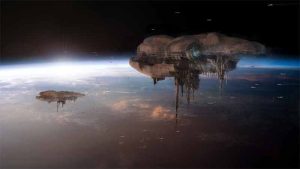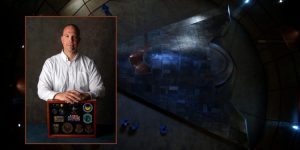Alien motherships can be seen in the solar system


Expert ufologists advance the theory that “motherships” could circulate in the solar system and send probes to Earth.

Avi Loeb
Pentagon UFO Unit Director Sean Kirkpatrick and theoretical physicist Avi Loeb make it clear that if such missions existed, they would have nothing to do with humans.
Sean Kirkpatrick, director of the Pentagon’s UFO unit – called the All Domain Anomaly Resolution Office (AARO) – and theoretical physicist Avi Loeb, former chairman of Harvard’s astronomy department and current science professor Frank B. Baird Jr. . from the prestigious university, claim in a paper that extraterrestrial “motherships” could be flying into our solar system and sending probes to Earth.
According to the researchers, the extraterrestrial equipment could arrive in two forms: space waste, similar to that which our own interstellar probes (Voyager 1 and 2, Pioneer 10 and 11 and New Horizons) will send in a billion years, or equipment functional such as autonomous devices with artificial intelligence (AI).
They point out that functional devices embedded in the Earth’s atmosphere are unlikely to carry biological entities, as they would not survive the long journey through interstellar space and its harsh conditions, including bombardment by energetic cosmic rays. , X-rays and gamma rays.
They speculated that aliens long ago sent a mothership across the galaxy, capable of launching its own smaller probes to visit interesting planets it passes.
Scientists consider the possibility that “an artificial interstellar object could be a parent spacecraft that releases many small probes as it passes near Earth,” an operational construct not unlike NASA missions.


These “dandelion seeds” could be separated from the main craft by the Sun’s tidal gravitational force or by some maneuvering ability.
If designed well, these tiny probes could reach Earth or other planets in the solar system for exploration.

Sean Kirkpatrick
They say astronomers couldn’t notice the spray from the mini-probes because they don’t reflect enough sunlight for existing telescopes to notice, even the mighty James Webb.
Near a star, alien technology probes could use starlight to recharge their batteries and use liquid water as fuel.
“This would explain why they target the habitable region around stars, where liquid water can exist on the surface of rocky planets with atmospheres, such as Earth.
“Habitable planets would be particularly attractive to trans-midrange probes, capable of moving between space, air and water. At great distances, Venus, Earth or Mars would be equally attractive to probes.
“But on closer inspection, Earth would exhibit spectral signatures of liquid water and vegetation that could attract selective attention,” write Kirkpatrick and Loeb.
In this six-page article, titled Physical Constraints on Unidentified Aerial Phenomena, the researchers believe that the overall purpose of the trip would be to allow the probes to propagate their senders’ project:
“As with biological seeds, raw materials found on the surface of the planet could also be used by probes as nutrients for self-replication or simply for scientific exploration. »
It is important to note that, given the delays associated with the propulsion scheme discussed here, it is not reasonable to assert that the intent of such a probe launched in the distant past has anything to do with the human race “.
“More likely, and like NASA missions, the objective would be scientific and exploratory in nature.




